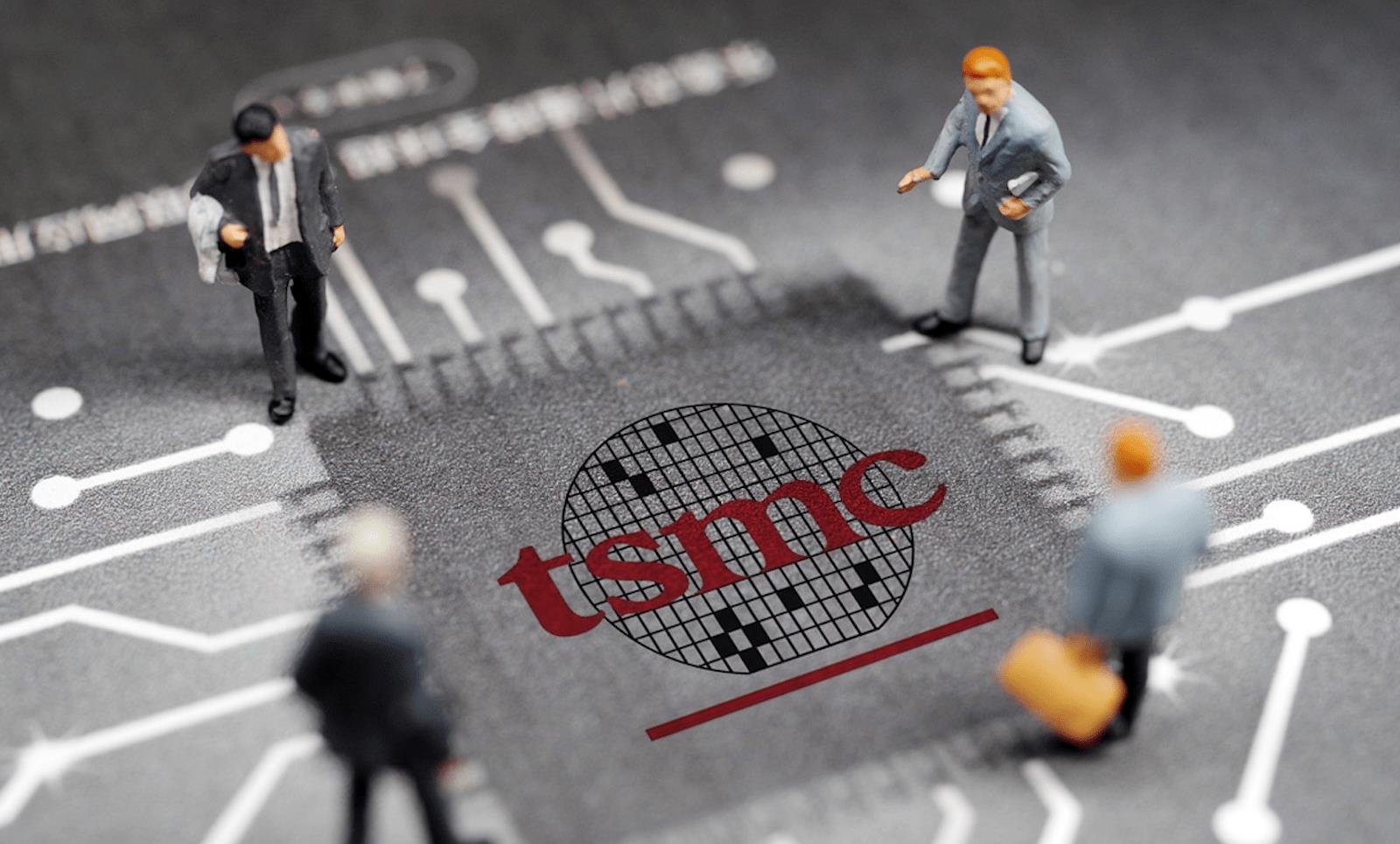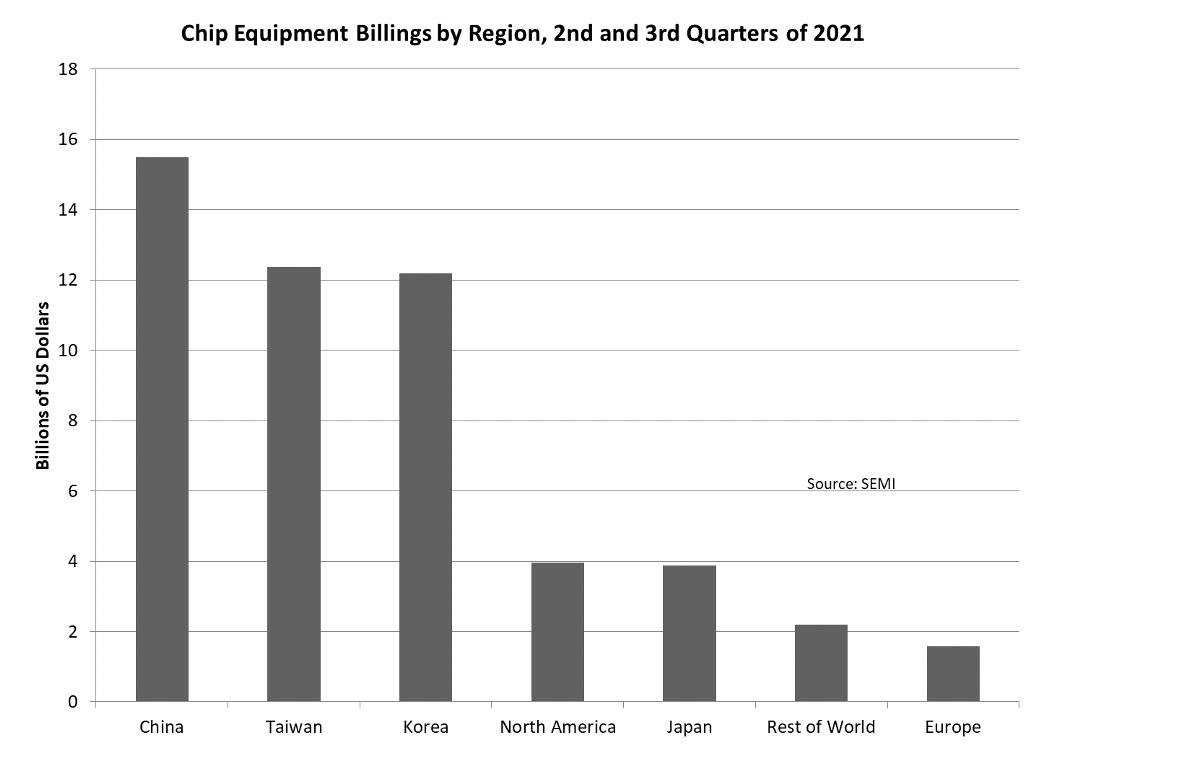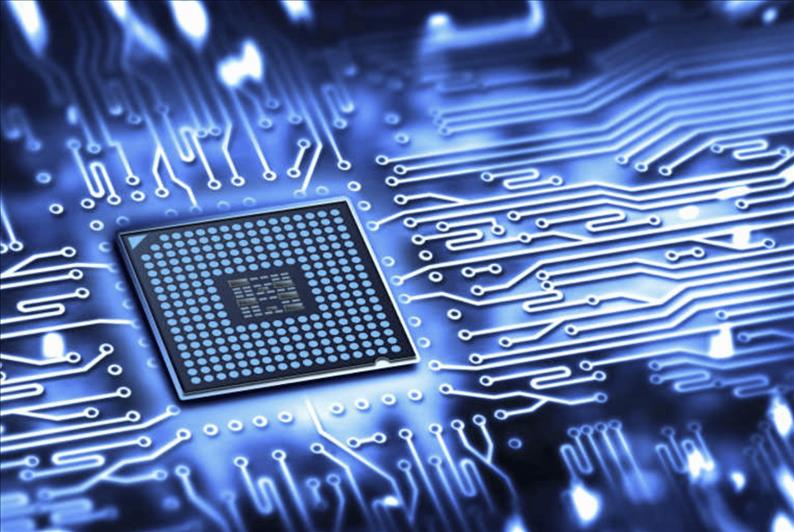
Taiwan chipmakers hint at decoupling from the US
NEW YORK – Taiwan's chip fabricators signed an agreement on December 3 to create their own semiconductor equipment industry, opening an“option to decouple from the West,” in the view of a prominent US research firm.
The Taiwanese initiative responds to Washington's extraterritorial sanctions on buyers of US fabricating equipment, imposed by then-president Donald Trump in May 2020. The US asserts the right to block sales of chips produced with US machines or intellectual property.
The US sanctions shut off Chinese tech giant Huawei's access to high-end chips of 7 nanometers and below, crippling what previously was the world's top handset producer. Unable to make 5G phones, Huawei lost market share to Chinese handset producer Xiaomi and sold its Honor smartphone business.
The US sanctions, though, had little impact on Huawei's telecommunications equipment business including equipment for 5G infrastructure, which uses older chips that are easier to source.
Taiwan will become“an advanced semiconductor production center,“ said Taiwanese Vice-Premier Shen Jong-chin, adding that Taiwan would invite chip equipment makers to move facilities to the island. The Taipei government plans to build one or two additional science parks in addition to the three parks now in service to accommodate the equipment manufacturers.
“We have a world-leading semiconductor industry in Taiwan, but 90% of our semiconductor manufacturing equipment is imported,” said Habor Hsu, chairman of the Taiwan Machine Tool and Accessory Builders Association, the Taipei Times reported.
He added,“In the wake of Covid-19 and the US-China trade dispute, international businesses will change where and how they make their products.” Four Taiwanese trade groups and three nonprofit organizations representing the whole of Taiwan's high-tech industry signed the deal.

Taiwan's TSMC is the world's leading semiconductor producer. Image: Facebook
Taiwan's chipmakers, who have massive commitments on the Chinese mainland, fear that US sanctions may stop them from using American equipment to make semiconductors for the US$300 billion Chinese chip market, the world's largest.
On December 9, the Wall Street Journal reported that the US Defense Department wants to stop China's largest chipmaker, SMIC, from purchasing American machines.
Industry analyst Dan Hutchison of the semiconductor research group VSLI wrote on December 8 that a home-grown chip equipment industry“would make it possible for Taiwan to decouple from the West. Worse, it points to a post-globalization world heading to a dark age of over-supply, fractured R&D resources and low innovation.”
Hutchison called the Taiwanese initiative a“clear post-globalization defensive move to counter the current US administration's action to shut down China and China's response to develop its own equipment industry.”
Taiwanese companies are leading China's state-sponsored drive to build domestic semiconductor manufacturing. In November, Ye Tianchun , chairman of the integrated circuit (IC) division of China's Semiconductor Industry Association told a conference:“A noteworthy phenomenon is that the proportion of domestic-funded enterprises' revenue has dropped significantly from 2016 to 2020, from 44.0% to 27.7%, while the proportion of foreign-funded enterprises has risen from 49.1% to 61.3%,” led by Taiwanese chip fabricators.
“This means that the industry as a whole is growing and the revenue of domestic-funded enterprises is also growing, but the growth rate is much lower than that of foreign-funded enterprises and Taiwan-funded enterprises,” Ye added. His speech was reported in the Chinese website“Observer” (guancha.cn).
Taiwan's chip producers want to maintain their leadership in China's domestic chip fabrication and will build their own chip-making equipment to prevent US sanctions from slowing their investments on the mainland.
The two top providers of chip-making equipment, Applied Materials and LAM, both are American. Tokyo Electron, Japan's largest equipment maker, increased its China sales from 50 billion yen ($441 million) in 2015 to 400 billion yen this year.
America's chip industry opposed the sanctions, fearing that foreign chip fabricators would source equipment elsewhere. Trump initially vetoed the sanctions on chip equipment in December 2019 after the US Defense Department argued that it would cut revenues for American equipment makers and reduce their R&D funding.
On February 18, 2020, Trump tweeted:“The United States cannot, & will not, become such a difficult place to deal with in terms of foreign countries buying our product, including for the always used National Security excuse, that our companies will be forced to leave in order to remain competitive.”
But Trump changed his mind after the Covid-19 pandemic and chose what administration staffers called the“nuclear option” of banning sales to Huawei of foreign-made chips that used American equipment or intellectual property (see Trump bets the farm on Huawei equipment ban , May 22, 2020).
The US Chamber of Commerce warned last year,“For the US semiconductor industry, forgoing the China market would mean lower economies of scale and R&D spending—and a less central role in the full web of global technology supply chains. Decoupling would prompt some foreign firms to 'de-Americanize' their semiconductor activities, putting to the test whether that is possible and further motivating China to seek self-sufficiency. Lost access to Chinese customers would cause the US industry $54 billion to $124 billion in lost output, risking more than 100,000 jobs, $12 billion in R&D spending, and $13 billion in capital spending.”
China responded with a crash effort to build its own chip fabrication, concentrating on the“workhorse” sector of 14 nanometers and above. The 3-nanometer to 7-nanometer chips that power 5G smartphones require extreme ultraviolet lithography, with equipment produced only by Holland's ASML.
Washington blocked access to this equipment. Nonetheless, China is now the world's biggest buyer of semiconductor fabricating equipment, with nearly $16 billion in billings during the second and third quarters of 2021. Taiwan purchased about $12 billion in chip-making equipment during the same period. Some portion of that was transshipped to Taiwanese facilities on the mainland.

“China has narrowed its gap in semiconductor production and design to just one to two generations behind lead players,” Professor Graham Allison and former Google CEO Eric Schmidt wrote In a December 2021 report by Harvard University's Belfer Center for Science and International Affairs.
“Over the next decade, China will become the world's largest semiconductor producer in mature technology nodes, while ASML CEO Peter Wennink estimates that 'in 15 years' time they'll be able to do it all by themselves [and achieve technological sovereignty in semiconductors],'” they wrote.
The US share of world semiconductor manufacturing has shrunk from an absolute monopoly in the 1960s to just 12% today, and only in mature nodes. President Joe Biden proposed and the US Senate passed a $52 billion subsidy for US semiconductor manufacturing.
But as Alan Patterson observed in a December 7 opinion piece for EE Times, a US electronics industry magazine published in the US, companies like Intel, IBM, Microsoft and Google who have lobbied for these subsidies spend money to buy back their stock rather than invest in chip-making.
America's top chip-maker Intel“spent $50 billion on capital expenditures and $53 billion on R&D during the past five years,” Patterson observes. But Intel“also lavished shareholders with $35 billion in stock buybacks and $22 billion in cash dividends, which altogether used up 100% of Intel's net income.”

Legal Disclaimer:
MENAFN provides the
information “as is” without warranty of any kind. We do not accept
any responsibility or liability for the accuracy, content, images,
videos, licenses, completeness, legality, or reliability of the information
contained in this article. If you have any complaints or copyright
issues related to this article, kindly contact the provider above.


















Comments
No comment